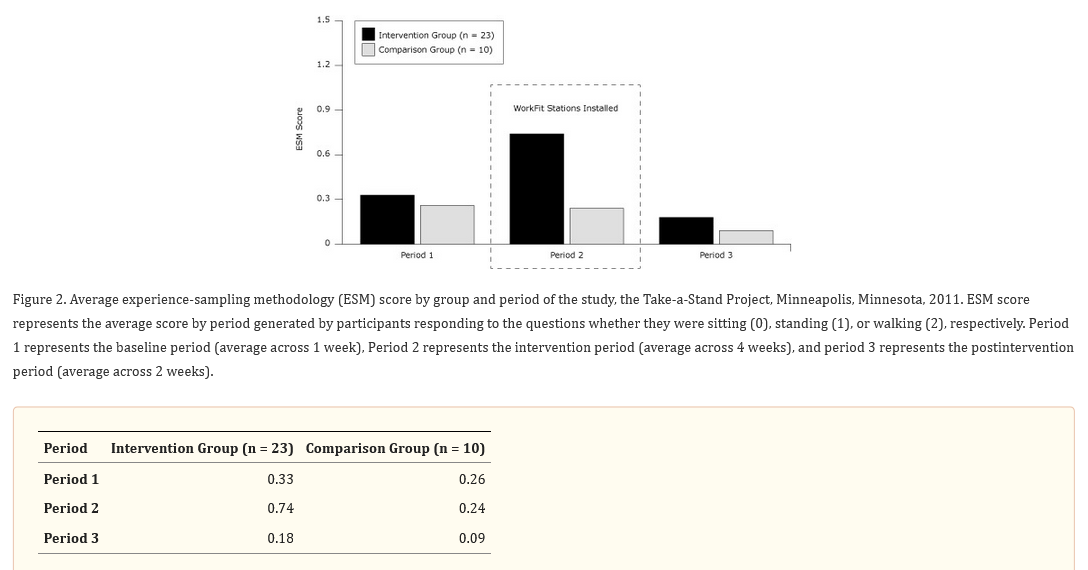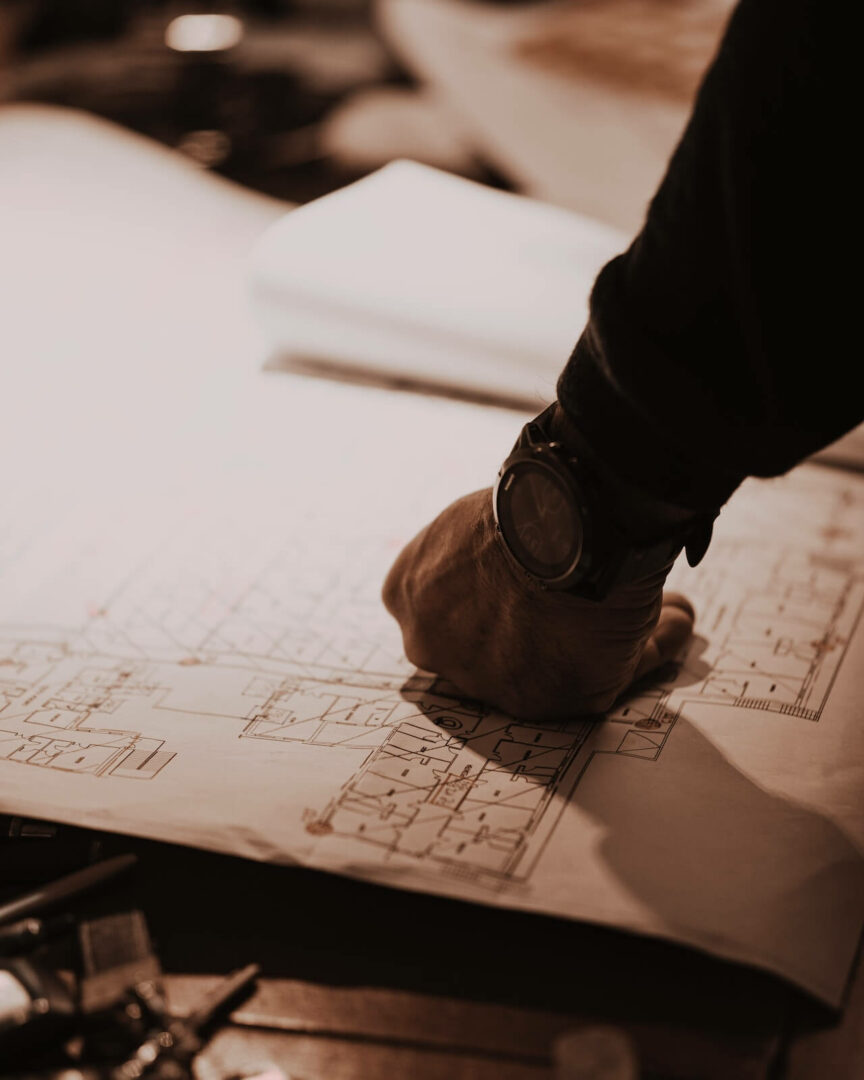The Health Benefits of Standing Desks
Tyson Sewell | Last updated May 28, 2023 | Published on May 28, 2023
In our increasingly digital world, the threat of a sedentary lifestyle looms large. Extended hours of sitting, often in sub-optimal ergonomic conditions, have led to a plethora of health issues, from weight gain to cardiovascular diseases [1]. As our awareness of these concerns has grown, so too has the demand for practical solutions.
One such innovation is the standing desk, a tool that allows you to work comfortably while standing. So, what exactly are the health benefits of standing desks? Let’s delve deeper.

What is a Standing Desk?
Standing desks, alternatively known as stand-up desks, are desks designed to enable you to work comfortably while on your feet. The beauty of these desks lies in their adaptability. Most modern iterations of time standing, are height-adjustable, enabling you to seamlessly switch between sitting and standing. This flexibility allows you to customize your work environment to suit your comfort, providing an effective countermeasure to the problems associated with prolonged sitting.
There are several different types of standing desks, each with its unique features:
1. Adjustable Height Standing Desks
These are the most common type of standing desks and feature a height-adjustable design. They allow the user to adjust the desk’s height to switch between sitting and standing positions easily. Some of them come with an electronic mechanism for height adjustment, while others may require manual adjustment.
2. Fixed Height Standing Desks
These are non-adjustable sit stand desk that are set at a fixed height. They are a good option if you are planning to spend the majority of your day standing. However, they lack the flexibility to switch between sitting and standing positions.
3. Sit-Stand Desk Converters
These are devices that can be placed on top of a regular desk to transform it into a standing desk. They are generally height-adjustable and allow you to switch between sitting and standing without needing a completely different desk.
4. Treadmill Sit Stand Desks
These are innovative desks that combine a standing desk with a treadmill. This allows the user to walk at a slow pace while working, thus increasing physical activity and burning more calories.
5. Cycling Desks
Similar to treadmill desks, these desks integrate a stationary bike with a desk. They allow users to pedal lightly while working, promoting physical activity.
6. Mobile Standing Desks
These desks come with wheels, allowing you to move your workstation as needed. They are perfect for a dynamic work environment where mobility is key.
Each of these height adjustable desks can serve different needs and preferences. The best standing desk for you would depend on your specific work situation, physical comfort, and individual health goals.
Health Benefits of Standing Desks
1. Reduced Risk of Weight Gain and Obesity
One of the most tangible benefits of using a standing desk is the potential for weight loss and management. Weight gain typically occurs when the calories consumed outweigh the calories expended. In contrast, standing has been found to burn more calories than sitting. Thus, incorporating a standing desk into your daily routine can contribute to a healthier caloric balance, reducing the risk of weight gain and obesity [2]. More than a convenience, it becomes a tool for healthier living.
2. Lower Blood Sugar Levels
Post-meal spikes in blood sugar levels can be a significant concern, especially for individuals with insulin resistance or type 2 diabetes. Studies suggest that alternating between sitting and standing can have a marked impact on moderating blood sugar levels [3]. A study published in the European Heart Journal found that alternating between standing and sitting every 30 minutes throughout the workday led to a 11.1% reduction in blood sugar spikes [4]. This capability of the standing desk to aid in blood sugar control underscores its potential as a practical tool in health management.

Adjusted mean glucose iAUC was lowered by 11.1% after the prolonged sitting interrupted with standing breaks condition (6.38 mM·h−1 (CI, 5.04–7.71)) relative to the prolonged sitting condition (7.18 mM·h−1 (CI, 5.85–8.52)). (Reference: Thorp, Alicia Ann; Kingwell, Bronwyn A.; Sethi, Parneet; Hammond, Louise; Owen, Neville; Dunstan, David W. (2014). “Alternating Bouts of Sitting and Standing Attenuate Postprandial Glucose Responses. Medicine & Science in Sports & Exercise.” Medicine & Science in Sports & Exercise, November 2014.)
3. Lower Risk of Heart Disease
The concept that standing is beneficial for heart health is not new. A study dating back to 1953 by Dr. Morris and colleagues discovered that bus conductors who stood all day had half the risk of heart disease-related deaths compared to their counterparts who sat [5]. This study sparked a flurry of subsequent research. While the mechanisms are still being understood, the evidence strongly suggests that prolonged sedentary behavior can increase the risk of heart disease by as much as 147% [6].
Incorporating standing desks into your work routine can contribute to mitigating this risk. The ease of transitioning between sitting and standing allows you to break up extended periods of sitting, thereby reducing the associated cardiovascular risks [6]. In this regard, standing desks represent a proactive step towards better heart health.
The health benefits of standing desks extend beyond these key points, encompassing improved mood and energy levels, reduced back pain, and even the potential for longer life. As we continue to grapple with the health risks and implications of our increasingly sedentary lives, the standing desk appears as a beacon of hope, a simple adaptation with profound implications. Thus, the question is not merely, “What are the health benefits of standing desks?” but also, “What can you gain by incorporating a standing desk into your work routine?” The answer, it would seem, is quite a lot.
4. Improved Mood and Energy Levels
While we often focus on the physical benefits of standing desks, their influence on psychological health is equally impressive. Studies suggest a strong correlation between extended periods of sitting and increased feelings of anxiety and depression [7]. On the other hand, users of standing desks often report enhanced mood and energy throughout the day [8]. A seven-week study with 167 employees found that participants using sit-stand desks reported less stress and fatigue compared to those who remained seated all day [8]. Additionally, upon discontinuing the use of standing desks, overall mood reverted to its initial levels [8].
By promoting physical activity and breaking the monotony of prolonged sitting, standing desks serve as a mood booster. This is particularly beneficial in the workplace, where positive mood states are linked with increased productivity and better interpersonal relationships [8].
5. Reduced Back Pain
Back pain is one of the most commonly reported back health problems and issues among office workers who sit all day. Many research studies have been conducted to investigate if standing desks could alleviate this problem. For instance, participants of a study published in the Journal of Physical Activity and Health reported up to a 32% improvement in lower back pain after several weeks of using standing desks [9]. Another study by the Centers for Disease Control and Prevention (CDC) confirmed these findings, showing that the use of sit-stand desks reduced upper back and neck pain by 54% after just four weeks in standing desk users monitored [10].

Average ESM score by group participants on the study. (Reference: Pronk, N. P., Katz, A. S., Lowry, M., & Payfer, J. R., “Reducing occupational sitting time and improving worker health: Take-a-Stand Project,” PubMed, 2011)
However, it’s important to note that standing all day isn’t the solution to this problem. Instead, an adjustable desk that allows you to change your position regularly and adopt an ergonomic standing position can help prevent or reduce back pain [9,10].
6. Potential for Longer Life
Prolonged sitting has been linked with a shorter lifespan [11]. This is primarily due to the increased risk of cardiovascular disease and other sedentary behavior-related illnesses that come with a seated lifestyle [11]. A study in the American Journal of Preventive Medicine estimated that reducing sitting time could potentially increase life expectancy by two years [12]. While research is still ongoing, it’s clear that less sitting and more standing during your day could potentially contribute to a longer life [12].
Standing desks, thus, present a holistic approach to better health. By addressing the immediate discomfort of prolonged sitting and the long-term risk of sedentary behavior-related diseases, standing desks demonstrate a practical and effective response to the challenges of the modern workplace.
My Year with an Electric Standing Desk: A Designer’s Experience
Ushering in a New Workflow
My journey into the world of standing desks began a year ago. As a furniture designer who specializes in creating and testing my own ergonomic creations, I felt a strong draw towards this innovative piece of furniture and had to know if a standing desk really was worth it. I had heard of its numerous benefits and thought, “Why not give it a try?” And so, I did – and I’ve never looked back since.
The most significant change I noticed after integrating the standing desk into my routine was the positive impact it had on my daily workflow. Like clockwork, every day around 3pm, I used to feel a familiar slump creeping in. This was when agitation and sluggishness would set in, hindering my productivity. However, after incorporating standing sessions into my work routine, the late afternoon slump became a thing of the past. Now, even as the clock strikes 3, I find myself energized and ready to tackle the tasks ahead.
Physical Health Improvements
The switch to a standing desk did more than just ward off afternoon fatigue – it brought about tangible improvements to my physical and mental health too. The transition to an upright work position meant I was no longer craning my neck downwards to look at my monitors. This subtle shift led to a marked improvement in my posture. Moreover, I noticed a positive change in my leg and lower back comfort. Gone were the days of feeling tense and tight after hours of sitting, I’d managed to get the blood flowing and my mind focused.
Customizing My Workspace
Perhaps the most exciting part of this journey was the opportunity to adapt and customize my workspace. My standing desk set-up is a testament to the potential of ergonomic design. With the addition of two ultrawide screens on single monitor arms, my workspace became an efficient and visually impressive hub. The convenient integration of easy-to-reach power options both above computer monitor and below the desk added another level of functionality.
The Standing Desk: A Game Changer
The standing desk that I’ve come to know and love is the Desky Dual Rubberwood Sit Stand Desk. Its versatility and adaptability have made it an integral part of my day-to-day work life. Yet, like any new habit, it took some time to adapt to using the standing feature regularly. For the first few months, I would set a timer on my phone to remind myself to alternate between sitting and standing.
The Importance of Proper Ergonomic Set-up
One key insight I have gleaned from my experience is the importance of proper ergonomic set-up. Whether sitting or standing, ensuring that your monitors, desk, and chair (if sitting) are correctly positioned for your height is vital. It might seem counterproductive if you find yourself standing yet hunched over your laptop computer screen. Take the time to research and apply the most appropriate ergonomic ranges for your stature.
Looking Forward: The Future of Ergonomic Design
To sum up, my year with the standing desk has been transformative. The benefits I have reaped, from improved workflow to enhanced health, stand as a testament to the profound impact that ergonomic office furniture can have. As a designer, the personal experience has provided me with valuable insights that I look forward to incorporating into my future projects.
Stand by Me
Standing desks aren’t just a passing trend – they are a functional response to a significant health concern. The benefits of using standing desks extend far beyond comfort; they encompass wide-ranging health advantages, from weight management and blood sugar control to improved mood, reduced back pain, and potential for a longer life.
The future of work, it seems, may be on its feet. Whether at home or the office, adopting a standing desk might just be the change you need to transform your workday, boost productivity, and, most importantly, enhance your health. If you haven’t yet given the benefits of a standing desk a try, it might be time to stand up for your health.
References:
[1] Owen, N., Healy, G. N., Matthews, C. E., & Dunstan, D. W. (2010). Too much sitting: the population health science of sedentary behavior. Exercise and sport sciences reviews, 38(3), 105.
[2] Buckley, J. P., Hedge, A., Yates, T., Copeland, R. J., Loosemore, M., Hamer, M., … & Dunstan, D. W. (2016). The sedentary office: an expert statement on the growing case for change towards better health and productivity. British Journal of Sports Medicine, 50(21), 1357-1362.
[3] Henson, J., Davies, M. J., Bodicoat, D. H., Edwardson, C. L., Gill, J. M., Stensel, D. J., … & Yates, T. (2016). Breaking up prolonged sitting with standing or walking attenuates the postprandial metabolic response in postmenopausal women: a randomized acute study. Diabetes care, 39(1), 130-138.
[4] Thorp, Alicia Ann; Kingwell, Bronwyn A.; Sethi, Parneet; Hammond, Louise; Owen, Neville; Dunstan, David W. (2014). Alternating Bouts of Sitting and Standing Attenuate Postprandial Glucose Responses. Medicine & Science in Sports & Exercise, 46(11), 2053-2061.
[5] Morris, J. N., Heady, J. A., Raffle, P. A., Roberts, C. G., & Parks, J. W. (1953). Coronary heart-disease and physical activity of work. Lancet, 262(6796), 1111-1120.
[6] Katzmarzyk, P. T., Church, T. S., Craig, C. L., & Bouchard, C. (2009). Sitting time and mortality from all causes, cardiovascular disease, and cancer. Medicine & Science in Sports & Exercise, 41(5), 998-1005.
[7] Teychenne, M., Costigan, S. A., & Parker, K. (2015). The association between sedentary behaviour and risk of anxiety: a systematic review. BMC public health, 15(1), 1-9.
[8] Pronk, N. P., Katz, A. S., Lowry, M., & Payfer, J. R. (2012). Reducing occupational sitting time and improving worker health: the Take-a-Stand Project, 2011. Preventing chronic disease, 9.
[9] Chau, J. Y., Daley, M., Srinivasan, A., Dunn, S., Bauman, A. E., & van der Ploeg, H. P. (2014). Desk-based workers’ perspectives on using sit-stand workstations: a qualitative analysis of the Stand@ Work study. BMC public health, 14(1), 1-10.
[10] Pronk, N. P., Katz, A. S., Lowry, M., & Payfer, J. R. (2012). Reducing occupational sitting time and improving worker health: the Take-a-Stand Project, 2011. Preventing chronic disease, 9.
[11] Patel, A., Bernstein, L., Deka, A., Feigelson, H.S., Campbell, P.T, Gapstur, S., Colditz G. A., Thun, M.J., (2010). Leisure Time Spent Sitting in Relation to Total Mortality in a Prospective Cohort of US Adults. American Journal of Epidemiology, Volume 172, Issue 4, 15 August 2010, Pages 419–429.
[12] Katzmarzyk, P. T., & Lee, I. M. (2012). Sedentary behaviour and life expectancy in the USA: a cause-deleted life table analysis. BMJ open, 2(4), e000828.
Related Articles
10 Modern Office Desk Accessories for the Design-Savvy Professional
10 Modern Office Desk Accessories for the Design-Savvy Professional If you're like most professionals, your office is your playground. It's a space where you can be creative and productive, and where you can showcase your personal...
The Best Standing Desks You Can Buy In Australia
The Best Standing Desks You Can Buy In AustraliaBy now, we've all heard the health and productivity benefits of a standing desk and adopting a sit stand work-style. And with more of us working from home than ever, now is the perfect...
Must-Have Kids Desk Accessories
Must-Have Kids Desk AccessoriesWhether you have a new elementary school student or one who's almost ready to graduate from high school, it's never too late to add to their desk supplies. Keep your kids organized and motivated with...
Deprecated: ltrim(): Passing null to parameter #1 ($string) of type string is deprecated in /home/134197.cloudwaysapps.com/cereagymkw/public_html/wp-includes/formatting.php on line 4494
« Older Entries
About The Author







